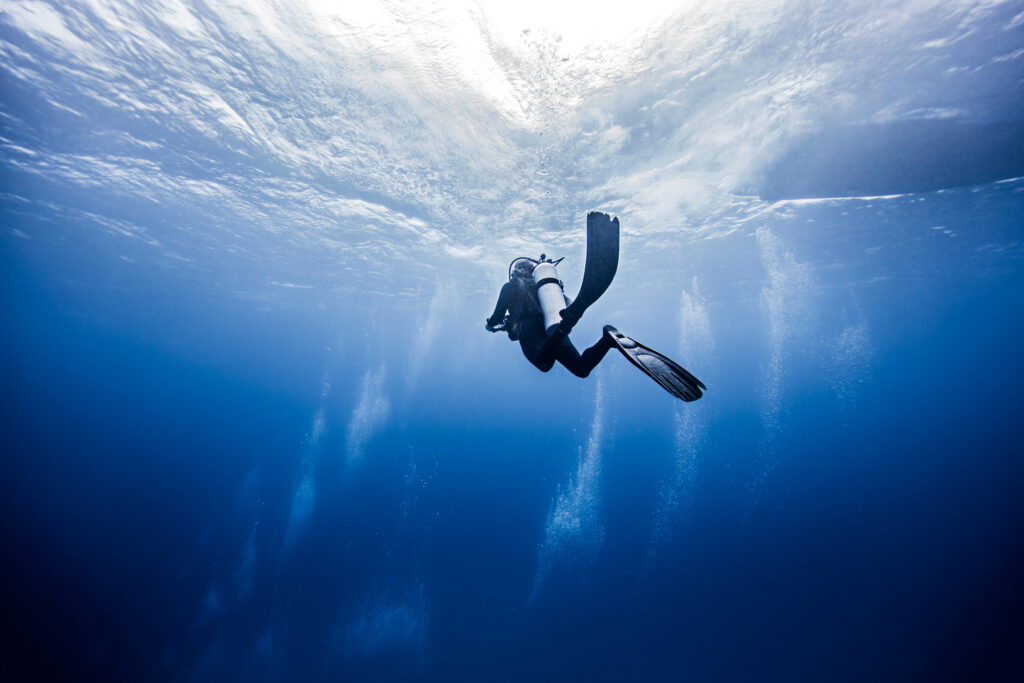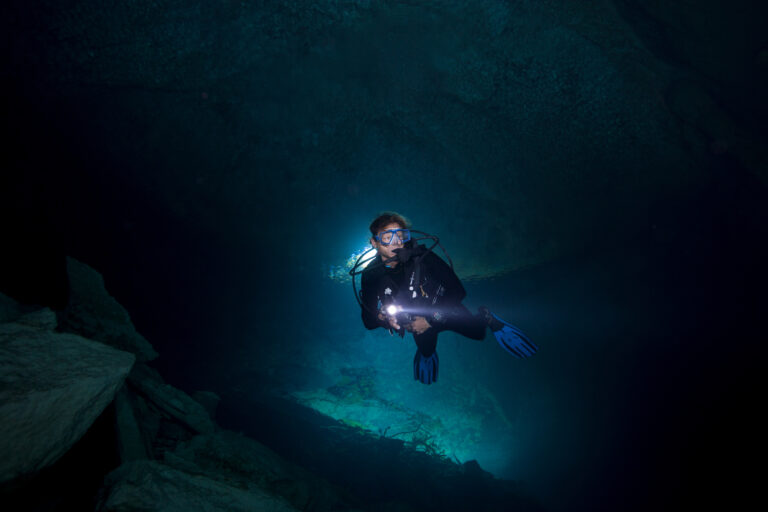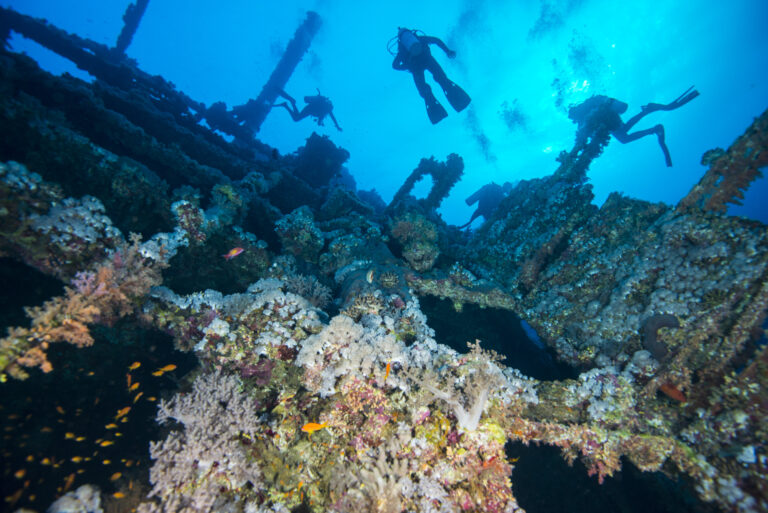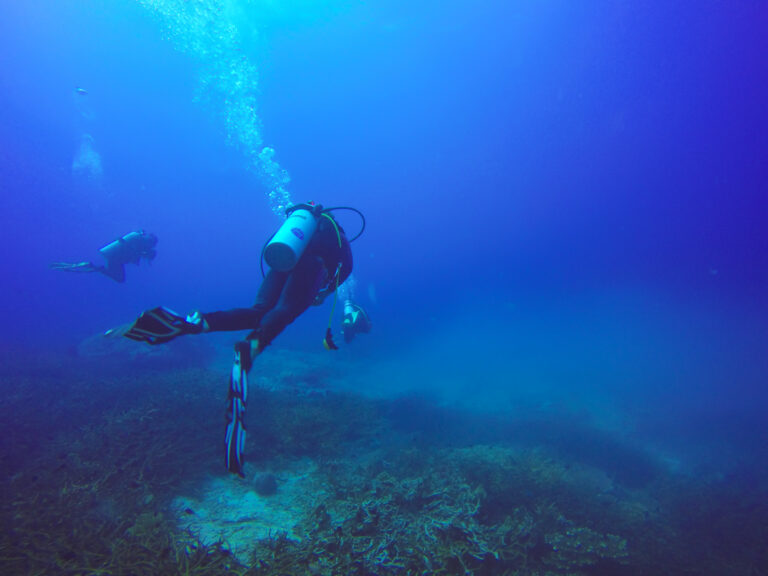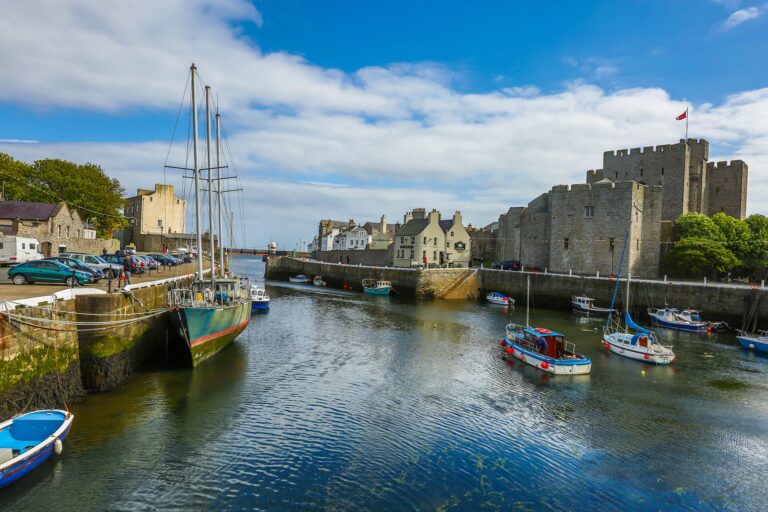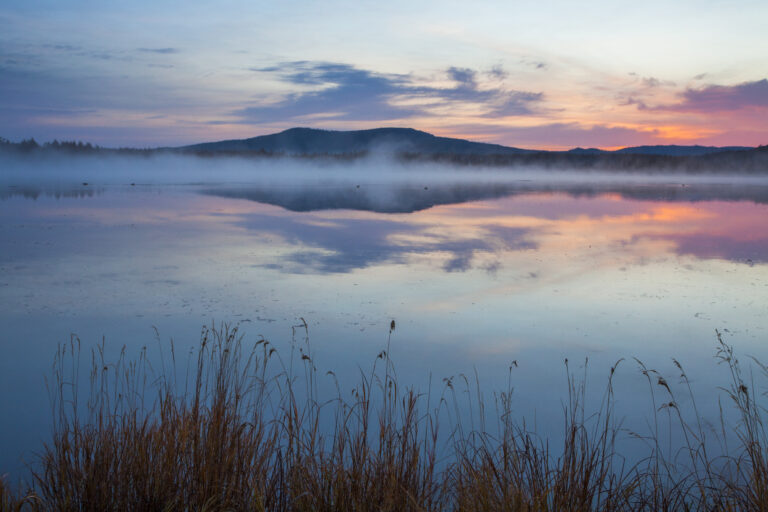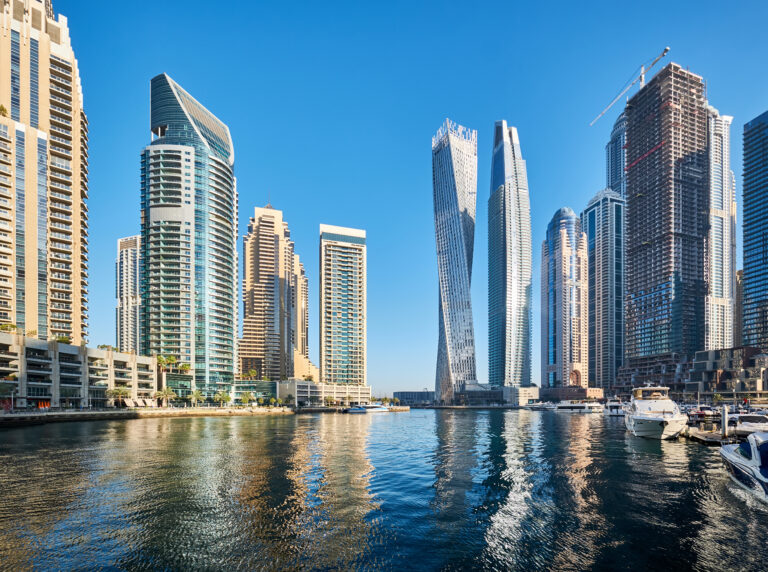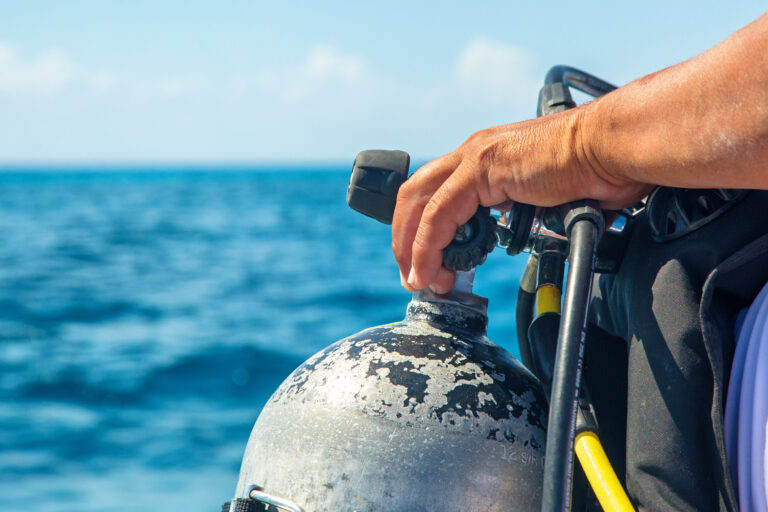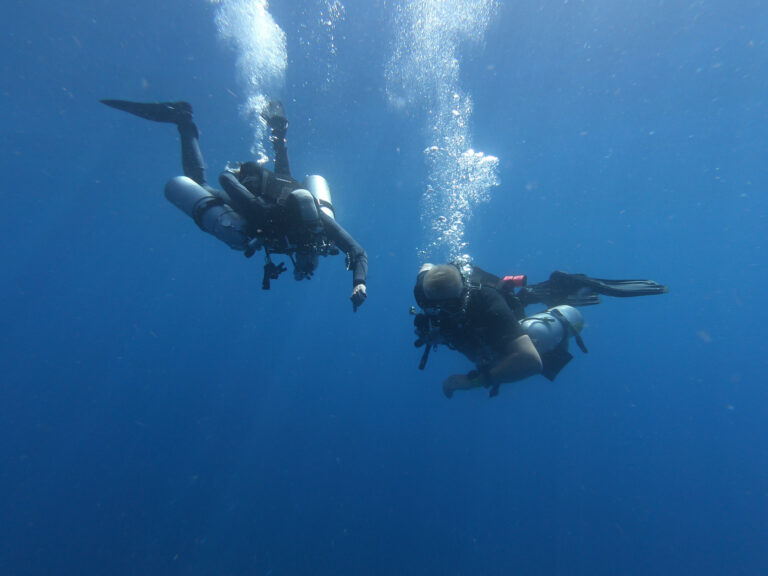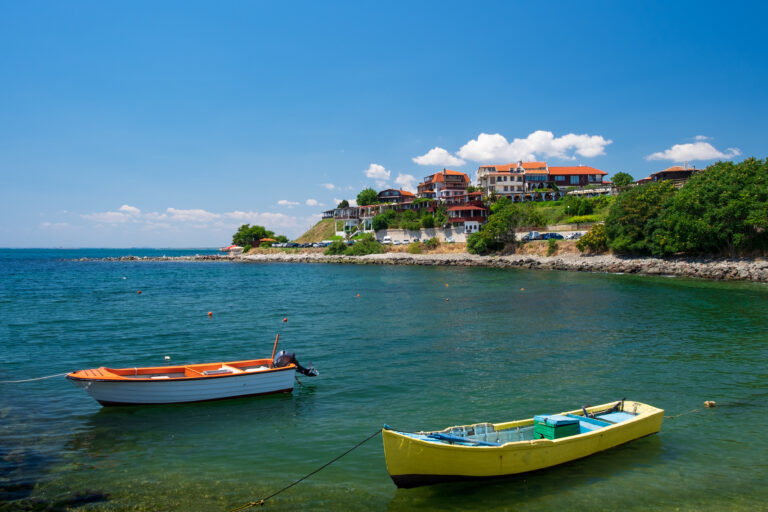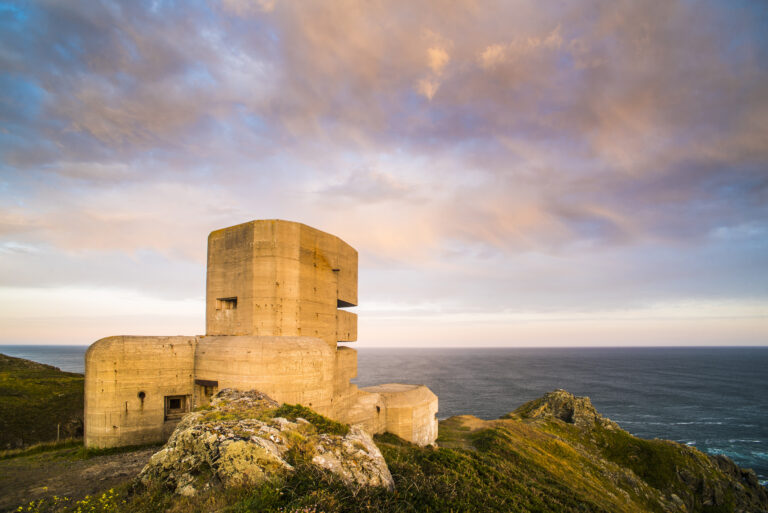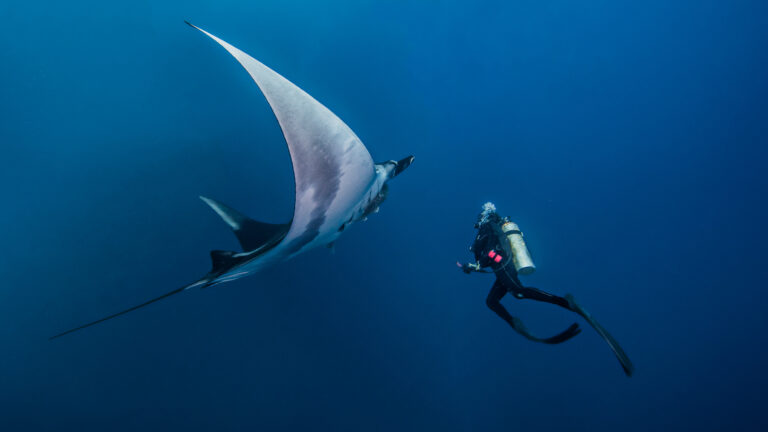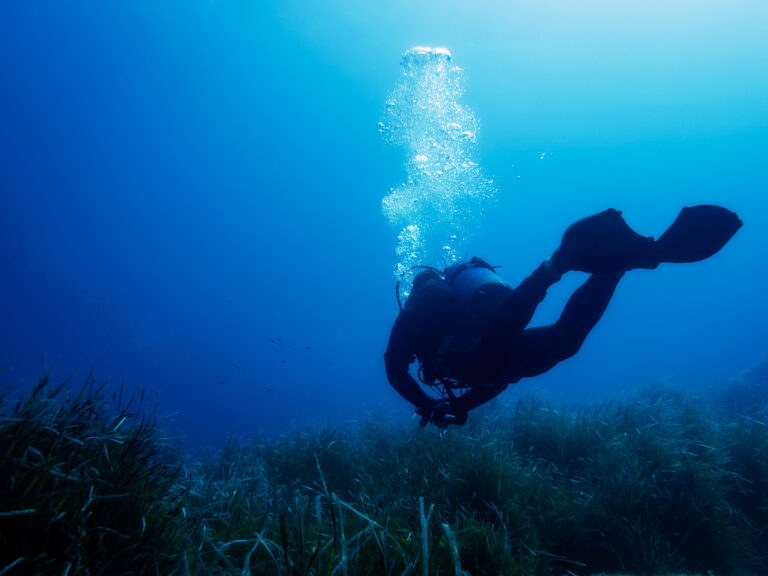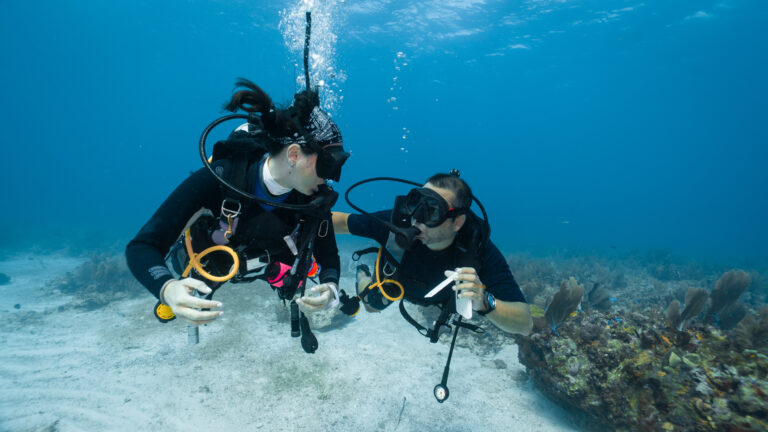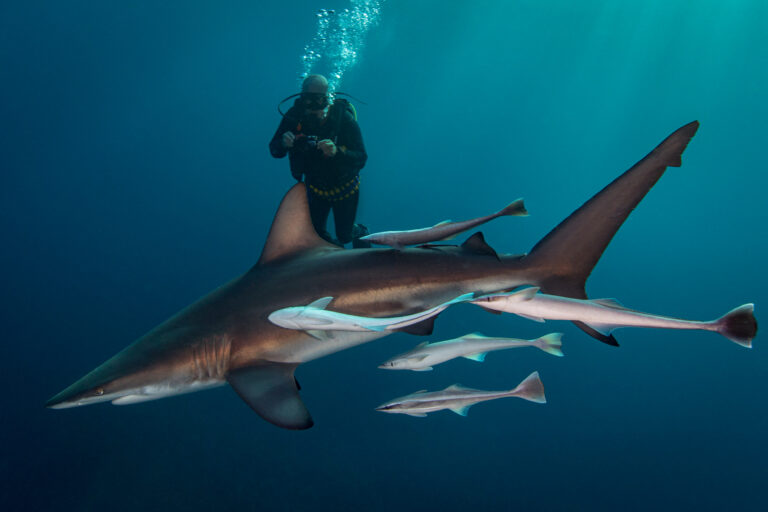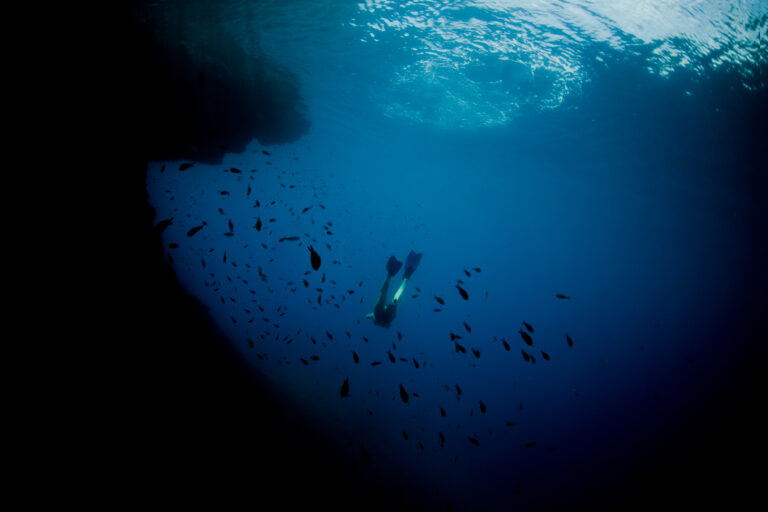Scuba Divers’ Travel Guide to Kiribati
Kiribati, a group of atolls and islands in the central Pacific, offers scuba divers an untouched underwater paradise. The clear, warm waters are home to vibrant coral reefs, diverse fish species, and unique marine life such as giant clams and rays. The islands’ remote location ensures that the dive sites remain pristine and relatively undiscovered. Kiribati’s diverse underwater landscapes, including coral gardens and drop-offs, provide a range of diving experiences. For scuba travelers seeking an unspoiled and serene diving destination, Kiribati promises a captivating and unforgettable adventure.
Location and Geography
Nestled in the heart of the Pacific Ocean, Kiribati is an enchanting archipelago that spans the equator and offers a scuba diving paradise unlike any other. This sprawling nation is composed of 33 coral atolls and reef islands, scattered over a vast area and divided into three main groups: the Gilbert Islands, the Phoenix Islands, and the Line Islands. Kiribati’s unique geographical positioning, straddling both the equator and the International Date Line, gifts it with a rich marine biodiversity and an array of underwater landscapes. The islands are surrounded by crystal-clear waters and vibrant coral reefs that teem with life, making it an ideal destination for divers seeking to explore untouched underwater worlds. The Phoenix Islands Protected Area, one of the largest marine protected areas in the world, is a testament to Kiribati’s commitment to preserving its pristine aquatic environments. With its remote location and relatively untouched ecosystems, Kiribati offers a truly unique diving experience, where adventurers can immerse themselves in the tranquility and beauty of the Pacific.
Visa and Entry Requirements
Travelers eager to explore the underwater wonders of Kiribati, a Pacific island nation renowned for its spectacular scuba diving sites, should be well-informed about its visa and entry requirements. As of the latest update, most visitors can obtain a visa upon arrival in Kiribati for stays up to 30 days, provided they have a passport valid for at least six months beyond their intended stay, proof of onward or return travel, and evidence of sufficient funds for their stay. However, it’s crucial to check the latest visa requirements before planning your trip, as policies can change. Additionally, ensure your travel insurance covers scuba diving activities, as the remote beauty of Kiribati’s underwater realms comes with the responsibility of being prepared for any situation. Remember, preserving the pristine condition of Kiribati’s marine ecosystems is a priority, so always follow local guidelines and respect the environment during your scuba diving adventures.
Getting to Kiribati
Getting to Kiribati, an enchanting archipelago in the central Pacific Ocean, is an adventure in itself, offering a glimpse into the remote beauty and serenity that awaits beneath its waves. The most common entry point for international travelers is through Bonriki International Airport in Tarawa, which is serviced by a select few airlines including Fiji Airways, with connections from Fiji’s Nadi International Airport, and Solomon Airlines, offering routes from Brisbane, Australia, and Honiara, Solomon Islands. Given its secluded location, planning your trip well in advance is crucial, as flights to this pristine paradise are less frequent than to more mainstream destinations. Upon arrival, the warm hospitality of the I-Kiribati people, coupled with the untouched natural beauty of the islands, makes the journey an integral part of the unforgettable scuba diving experience that awaits in Kiribati’s crystal-clear waters and vibrant coral reefs.
Best Time to Dive
Getting to Kiribati, an enchanting archipelago in the central Pacific Ocean, is an adventure in itself, offering a glimpse into the remote beauty and serenity that awaits beneath its waves. The most common entry point for international travelers is through Bonriki International Airport in Tarawa, which is serviced by a select few airlines including Fiji Airways, with connections from Fiji’s Nadi International Airport, and Solomon Airlines, offering routes from Brisbane, Australia, and Honiara, Solomon Islands. Given its secluded location, planning your trip well in advance is crucial, as flights to this pristine paradise are less frequent than to more mainstream destinations. Upon arrival, the warm hospitality of the I-Kiribati people, coupled with the untouched natural beauty of the islands, makes the journey an integral part of the unforgettable scuba diving experience that awaits in Kiribati’s crystal-clear waters and vibrant coral reefs.
Accommodation Options
Accommodation options in Kiribati cater to a range of preferences, from the adventurous diver seeking a closer connection with nature to those desiring more comfort after a day underwater. The islands offer a variety of stays, including eco-friendly lodges that emphasize sustainability and provide a unique opportunity to experience the local culture and environment. For those looking for a bit more luxury, there are a few boutique resorts that offer modern amenities, often with stunning ocean views and easy access to dive sites. Guesthouses and homestays are also popular, offering a more intimate glimpse into the I-Kiribati way of life, often with family-cooked meals and the chance to engage with local communities. While accommodation options may not be as plentiful or as opulent as in more developed tourist destinations, the available choices in Kiribati are about enhancing the dive experience by fostering a deeper connection with the island’s natural beauty and its people.
Dive Operators and Dive Shops
In the heart of the Pacific Ocean, Kiribati emerges as a scuba diving haven, offering an array of dive operators and shops that cater to both novice and experienced divers. These establishments are well-equipped to guide you through Kiribati’s underwater marvels, from its vibrant coral atolls to WWII wrecks teeming with marine life. Dive operators in Kiribati are known for their intimate knowledge of the local marine environment, ensuring divers experience the best sites under the safest conditions. Most dive shops provide a full range of services, including equipment rental, PADI certification courses, and guided dive excursions, allowing divers to explore the pristine waters of this island nation worry-free. With their warm hospitality and expert guidance, Kiribati’s dive operators and shops stand ready to unlock the door to some of the most spectacular and untouched dive sites in the Pacific.
Transportation within Kiribati
Transportation within Kiribati, particularly for scuba divers aiming to explore its underwater marvels, presents a unique adventure in itself. The country is spread across multiple islands, making air and sea travel the primary modes for inter-island movement. Air Kiribati provides domestic flights connecting the main islands, including Tarawa, Kiritimati (Christmas Island), and others, which are crucial for reaching different dive sites. For closer islands or within atoll travel, boats are the go-to, ranging from scheduled ferry services to chartered vessels that can be arranged through local operators or resorts. These boats not only serve as a means of transport but also offer an intimate experience of the Pacific Ocean’s vast beauty. Divers should plan their travel carefully, considering the limited flight schedules and the weather-dependent nature of boat travel, to ensure they maximize their underwater time in Kiribati’s pristine waters.
Currency and Payment Methods
In Kiribati, the official currency is the Australian Dollar (AUD), which is widely accepted across the islands, making transactions convenient for visitors from Australia or those already holding AUD. For scuba diving enthusiasts planning their underwater adventures in Kiribati, it’s important to note that while major hotels and dive shops in more populated areas like Tarawa may accept credit cards, many services, especially in the more remote islands or less touristy spots, operate on a cash-only basis. Therefore, it’s advisable to carry sufficient cash for your needs, including tips and smaller purchases. ATMs are available but can be scarce outside of major urban centers, so withdrawing enough cash upon arrival or in larger towns is a prudent approach. Always check with your bank regarding international transaction fees and inform them of your travel plans to ensure uninterrupted access to your funds. In summary, while Kiribati welcomes scuba divers with its breathtaking underwater world, being prepared with the right payment methods will ensure a smooth and enjoyable visit.
Language and Communication
In the heart of the Pacific Ocean, Kiribati offers an unparalleled scuba diving experience, where the vibrant underwater world is as rich and diverse as its culture. However, to fully immerse yourself in the beauty of Kiribati’s underwater realms and connect with the local community, understanding the nuances of language and communication is key. English and Gilbertese (also known as Kiribati) are the official languages, with English predominantly used in government and business, while Gilbertese thrives in daily conversation and local communities. For a seamless diving adventure, learning basic Gilbertese greetings and phrases can enrich your interaction with local dive operators and residents, offering a more authentic and respectful exchange. Remember, a smile and a friendly “Mauri” (hello) can go a long way in bridging the gap between cultures, making your underwater exploration in Kiribati not just a dive into the ocean, but a dive into its welcoming heart.
Local Culture and Attractions
Nestled in the heart of the Pacific Ocean, Kiribati is not just a scuba diver’s paradise but also a vibrant tapestry of culture and tradition waiting to be explored. Beyond its breathtaking underwater realms, Kiribati offers a unique glimpse into a way of life that has been shaped by the ocean’s rhythms. Visitors are welcomed into local communities with warm smiles and can experience traditional dances, music, and the art of storytelling, which are integral to Kiribati’s rich cultural heritage. The islands are dotted with historical sites, including remnants from World War II, sacred spots like the Tabuaeran and the mysterious ruins of Banaba. For those looking to immerse themselves in local customs, the maneaba (community meeting house) serves as the cultural heart of the islands, where important events and discussions take place. Kiribati’s local markets brim with handcrafted goods, offering a tangible piece of this unique culture to take home. From its underwater wonders to its cultural treasures, Kiribati promises an unforgettable journey for the adventurous traveler.
Cultural Etiquette and Tips
When planning a scuba diving trip to Kiribati, it’s essential to approach the local culture with respect and understanding. Kiribati’s communities are deeply rooted in tradition and social etiquette, which visitors should strive to honor. Firstly, always ask for permission before taking photographs of people, their homes, or sacred sites. This not only shows respect but also opens up a dialogue with locals, who are generally warm and welcoming. Dress modestly when not on the beach or diving, as Kiribati society is conservative, and showing too much skin can be frowned upon. Learn a few basic phrases in Gilbertese, the local language; greetings like “Mauri” (hello) can go a long way in showing your respect for the local culture. Additionally, be mindful of the environment and the ocean, as both hold significant cultural and spiritual importance to the I-Kiribati people. By following these simple guidelines, divers can ensure a culturally respectful and enriching experience in the beautiful waters and islands of Kiribati.
Local Laws and Regulations Relevant to Tourists
When planning a scuba diving trip to Kiribati, it’s essential for tourists to familiarize themselves with the local laws and regulations to ensure a safe and lawful experience. Kiribati, with its pristine waters and abundant marine life, is a part of the Phoenix Islands Protected Area (PIPA), one of the largest marine protected areas in the world. As such, scuba divers must adhere to strict environmental guidelines to minimize their impact on the delicate coral reefs and marine habitats. This includes restrictions on fishing, collecting coral or shells, and anchoring on coral reefs. Additionally, divers should be aware that certain areas may be off-limits to protect vulnerable ecosystems or for cultural reasons. It’s also important to note that Kiribati requires visitors to obtain a permit for scuba diving, which can usually be arranged through local dive operators. Compliance with these regulations not only ensures the preservation of Kiribati’s natural beauty but also contributes to the sustainability of its marine environments for future generations.
Safety Tips and Emergency Contacts
When planning a scuba diving adventure in the pristine waters of Kiribati, prioritizing safety is paramount to ensure an unforgettable experience amidst its breathtaking underwater landscapes. Before embarking on your journey, familiarize yourself with the local diving conditions, including currents, visibility, and marine life, to prepare adequately. Always dive within your certification limits and consider engaging with reputable local dive operators who are familiar with the area’s unique environment. It’s crucial to carry a dive computer, a surface marker buoy (SMB), and a whistle for safety. In case of an emergency, be aware that medical facilities in Kiribati are limited, and the nearest hyperbaric chamber is located in Fiji, highlighting the importance of having comprehensive dive insurance that includes medical evacuation. For immediate assistance, divers should have the contact information for the Kiribati Police Force (+686 21100) and the main hospital in Tarawa, Tungaru Central Hospital (+686 28100), readily available. Remember, the key to a safe diving trip in Kiribati is preparation, awareness, and respect for the ocean’s power.
Health and Travel Insurance
When planning your scuba diving adventure to the pristine waters of Kiribati, it’s crucial to consider your health and travel insurance coverage. Given Kiribati’s remote location in the central Pacific Ocean, access to comprehensive medical facilities is limited, especially on the outer islands. Therefore, divers should ensure their insurance covers medical evacuation, which can be exorbitantly expensive but necessary in the event of a diving accident or serious illness. Look for policies that specifically include coverage for scuba diving activities, as some standard travel insurances exclude such specialized sports. Additionally, verify that your insurance provides sufficient coverage for potential trip cancellations, gear loss, or delays, which can be common in remote destinations. Taking these precautions will allow you to fully immerse in the breathtaking underwater world of Kiribati, with peace of mind knowing you’re well protected.

